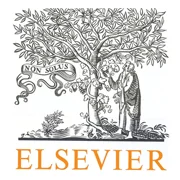دانلود ترجمه مقاله الگوریتمهای فیلتر کردن ابر نقاط 3 بعدی
| عنوان فارسی |
مروری بر الگوریتمهای فیلتر کردن ابر نقاط 3 بعدی |
| عنوان انگلیسی |
A review of algorithms for filtering the 3D point cloud |
| کلمات کلیدی : |
ابر نقاط سه بعدی؛ روش های فیلترینگ؛ حفظ ویژگی؛ کاهش نویز |
| درسهای مرتبط | مهندسی مکانیک |
| تعداد صفحات مقاله انگلیسی : 10 | نشریه : ELSEVIER |
| سال انتشار : 2017 | تعداد رفرنس مقاله : 84 |
| فرمت مقاله انگلیسی : PDF | نوع مقاله : ISI |
|
پاورپوینت :
ندارد سفارش پاورپوینت این مقاله |
وضعیت ترجمه مقاله : انجام شده و با خرید بسته می توانید فایل ترجمه را دانلود کنید |
1. مقدمه 2. روشهای فیلتر کردن ابر نقاط 3. نتایج آزمایشی و بحث و بررسی 4. نتیجهگیری

چکیده – در سالهای اخیر, توجه فزایندهای به ابر نقاط سهبعدی به عنوان یک شیوه نمایش جدید برای اشیا معطوف شده است. با این حال, ابر نقاطهای خام اغلب پر از نویز بوده و شامل دادههای پرت هستند. بنابراین, مهم است که نویز و دادههای پرت را از ابر نقاط حذف کرده و ویژگیهای خاص آن را حفظ کنیم. این مقاله کوششی است برای ارائه تحلیلی جامع از پیشینه تحقیقاتی فیلتر کردن ابر نقاط. روشهای موجود در هفت گروه طبقهبندی میشوند که بر ویژگیهای مشترک و آشکار آنها متمرکز هستند. یک ارزیابی تجربی نیز برای نشان دادن استحکام, اثربخشی و کارایی محاسباتی روشهای مختلف مورد استفاده در عمل انجام شدهاست. مقدمه: ابر نقاط 3 بعدی یک نمایش اولیه جدید برای اشیا است که به طور فزایندهای در بسیاری از حوزههای پژوهشی [۲]، مانند شناسایی اجسام [۴] و بازسازی [۵، ۶]، به دلیل سادگی، انعطافپذیری و قابلیت نمایش قدرتمند گسترش یافته است. در مقایسه با گرههای مثلثی، ابر نقاط نیازی به ذخیره یا حفظ اتصال چند ضلعی - مش [۷] یا سازگاری موضعی ندارند [۸]. بنابراین پردازش و کنترل ابر نقاط میتواند عملکرد بهتری داشته باشد و اضافه بار کمتری داشته باشد. این مزیتهای برجسته، تحقیق در مورد نقطه پردازش را به یک موضوع تحقیقاتی داغ تبدیل کرده است. توسعه سریع حسگرهای با هزینه پایین, مانند کینکت [1 - 18] و دوربینهای مدت پرواز [22], به دست آوردن ابر نقاط برای جوامع در حال رشد آسان است. ابر نقاط بهدستآمده از این سنسورها, به طور اجتنابناپذیری از نویز بالا رنج میبرد و شامل دادههای پرت است. بنابراین, انجام عملیات فیلترینگ بر روی ابر نقاط خام برای به دست آوردن ابرهای نقطهای دقیق که برای پردازش بیشتر مناسب هستند, ضروری است. در سالهای اخیر، با این که تعداد زیادی از روشها در فیلتر کردن ۳ بعدی پیشنهاد شدهاند، بیشتر این روشها برای مشها تعبیه شدهاند و تنها چند روش معدود مستقیماً بر روی ابر نقاط کار میکنند. علاوه بر این، هیچ مقاله تحقیقی در مورد تجزیه و تحلیل دقیق این روشهای فیلترینگ برای ابر نقاط وجود ندارد. در مقایسه با تحقیقات موجود, نوآوری اصلی این کار به شرح زیر است: (1) تا جایی که ما میدانیم، اولین مقاله بررسی بر روی الگوریتمها برای فیلتر کردن ابر نقاط سهبعدی تحقیق پیشرو است. (۲) این مقاله خوانندگان را با بررسی جامع روشهای علمی تحت پوشش در اوایل کار ارایه میدهد. ۳) یک خلاصه تطبیقی از ویژگیهای این روشها در شکل جدول نشانداده شدهاست. این مقاله آزمایشی را در ارتباط با مقایسه عملکرد چندین روش مورد استفاده گسترده انجام میدهد.
In recent years, 3D point cloud has gained increasing attention as a new representation for objects. However, the raw point cloud is often noisy and contains outliers. Therefore, it is crucial to remove the noise and outliers from the point cloud while preserving the features, in particular, its fine details. This paper makes an attempt to present a comprehensive analysis of the state-of-the-art methods for filtering point cloud. The existing methods are categorized into seven classes, which concentrate on their common and obvious traits. An experimental evaluation is also performed to demonstrate robustness, effectiveness and computational efficiency of several methods used widely in practice. Introduction: The 3D point cloud [1–3], a new primitive representation for objects, has became increasingly prevalent in many research fields [2], such as object recognition [4] and reconstruction [5,6], due to its simplicity, flexibility and powerful representation capability. In contrast to triangle meshes, the point cloud does not require to store or maintain the polygonal-mesh connectivity [7] or topological consistency [8]. Processing and manipulating point cloud therefore can demonstrate better performance and lower overhead. These prominent advantages make the research on processing point cloud a hot topic. The rapid development of low-cost sensors, such as Kinect [9–11] and time of flight cameras [5,12], makes it easy to obtain point cloud for growing communities. The point cloud acquired with these sensors, however, inevitably suffers from noise contamination and contains outliers [13,14] due to the limitations of sensors [5], the inherent noise of the acquisition device [15], the lighting or reflective nature of the surface or artifact in the scene [16]. Therefore, it is necessary to perform filtering operations on raw point clouds to obtain accurate point clouds that are suitable for further processing. In recent years, although a large number of methods contributing to 3D filtering have been proposed, most of these are devised for meshes and only a few approaches directly operate on point cloud. In addition, there is no survey paper giving an insightful analysis of these filtering methods for point cloud. Compared with the existing literature, the main contributions of this work are as follows: (i) To the best of our knowledge, this is the first review paper in the literature that focuses on algorithms for filtering 3D point cloud at present. (ii) This paper provides readers with a comprehensive review of the state-of-the-art methods covered in early work. (iii) A comparative summary of traits of these methods is demonstrated in table form. (iv) This paper carries out an experiment concerning on performance comparison of several widely used methods.
بخشی از ترجمه مقاله (صفحه 11 فایل ورد ترجمه)
محتوی بسته دانلودی:
PDF مقاله انگلیسی ورد (WORD) ترجمه مقاله به صورت کاملا مرتب (ترجمه شکل ها و جداول به صورت کاملا مرتب)



دیدگاهها
هیچ دیدگاهی برای این محصول نوشته نشده است.